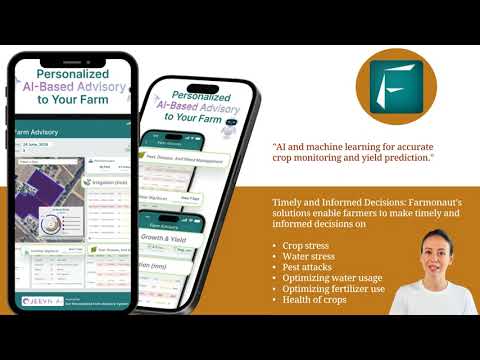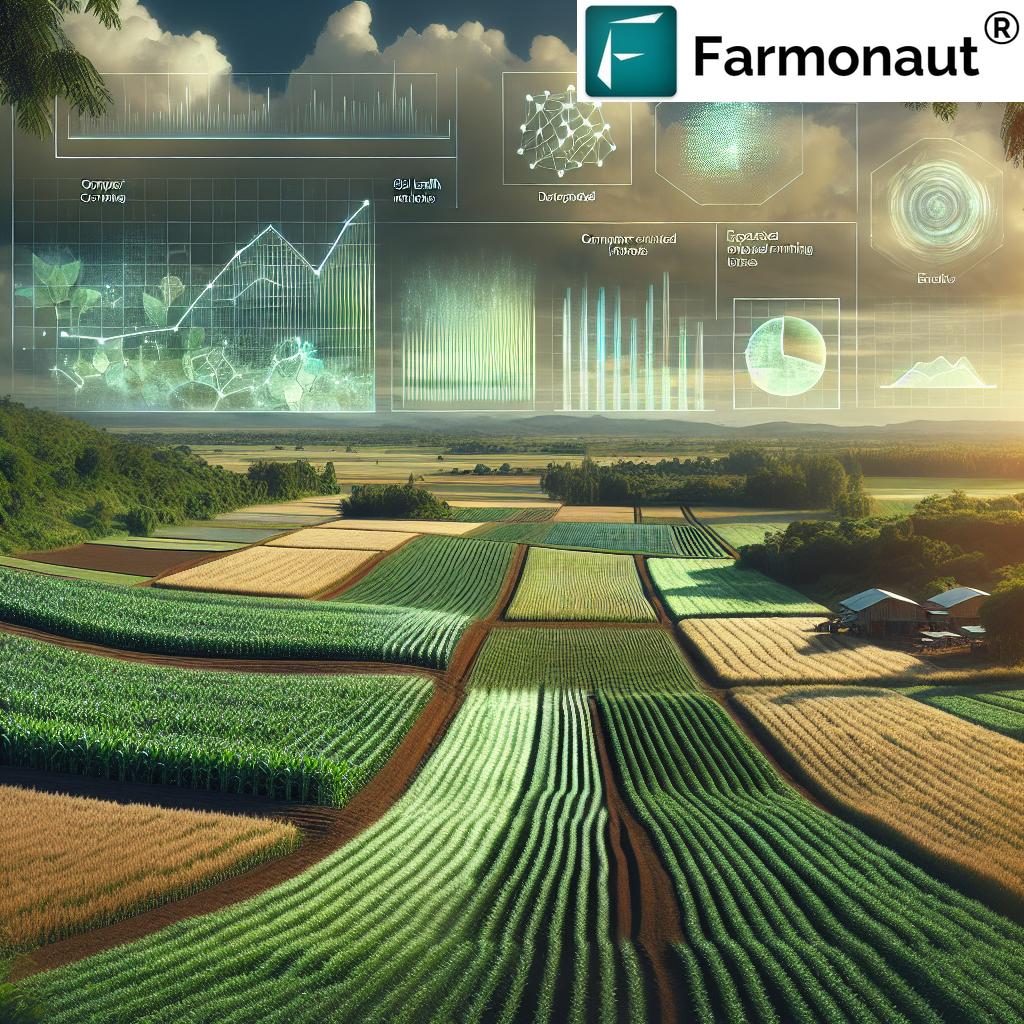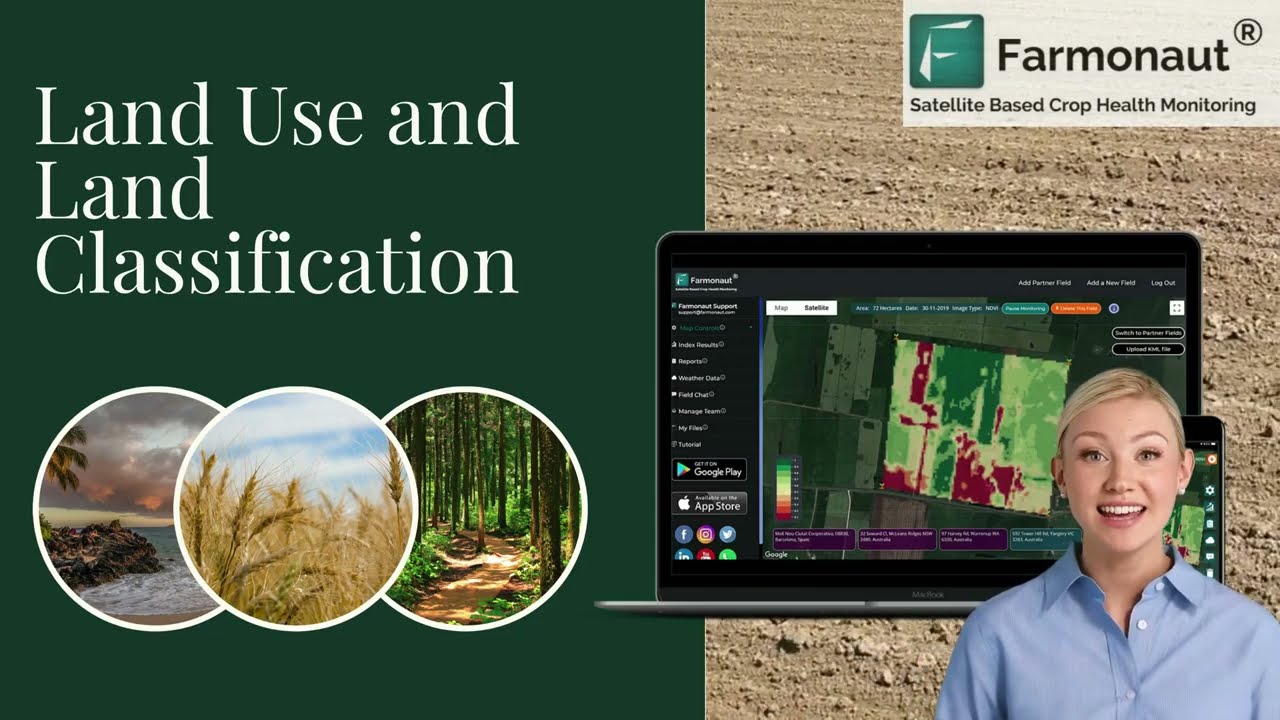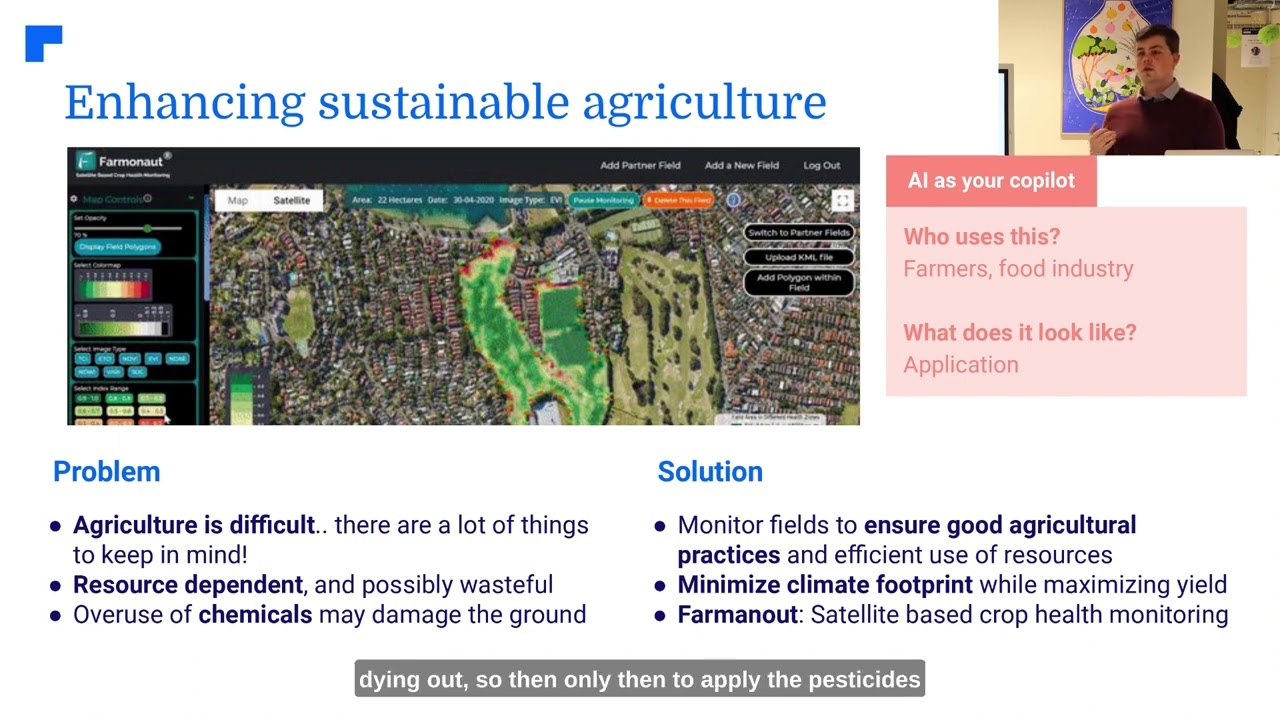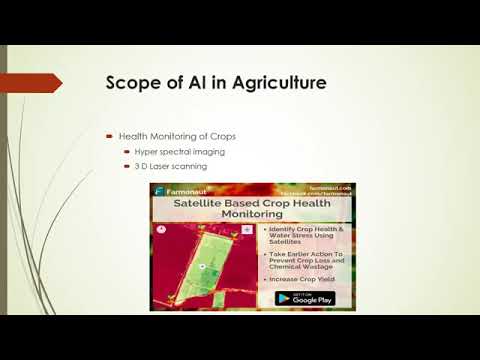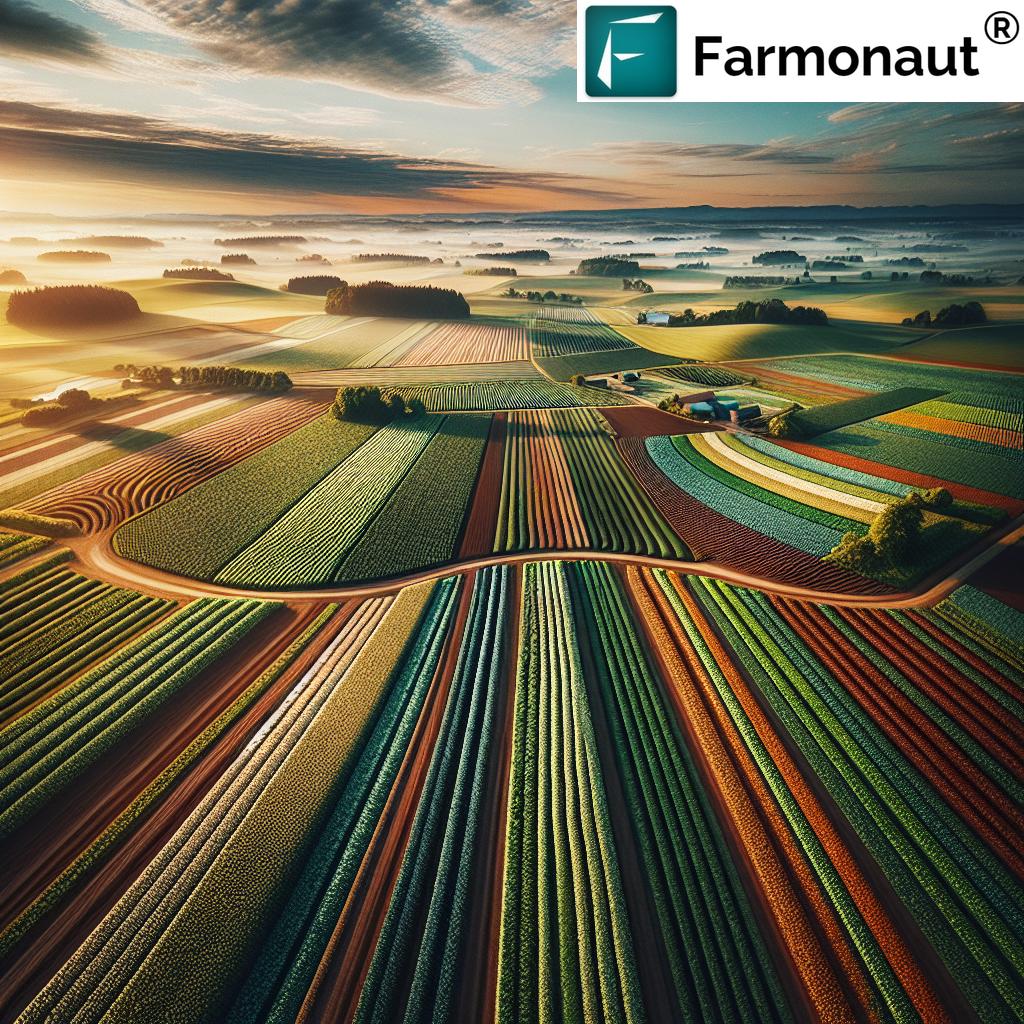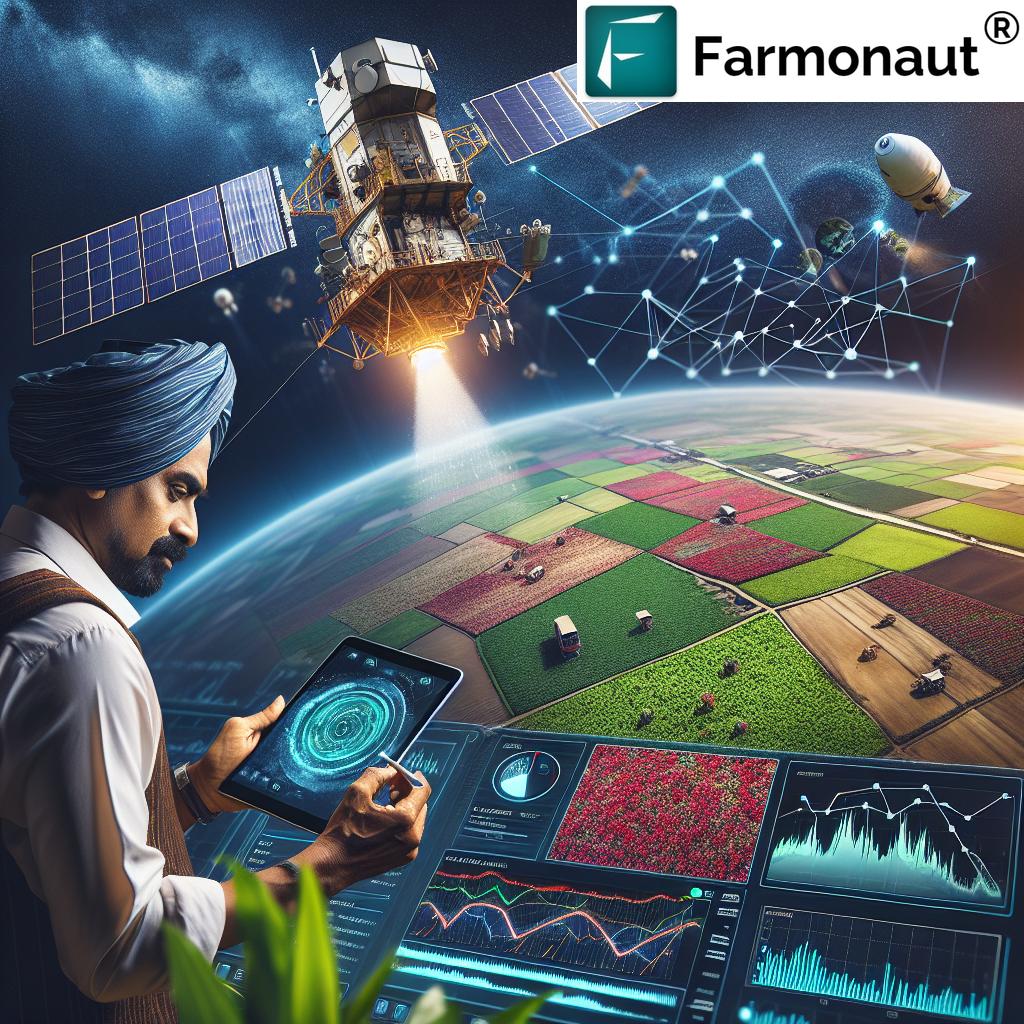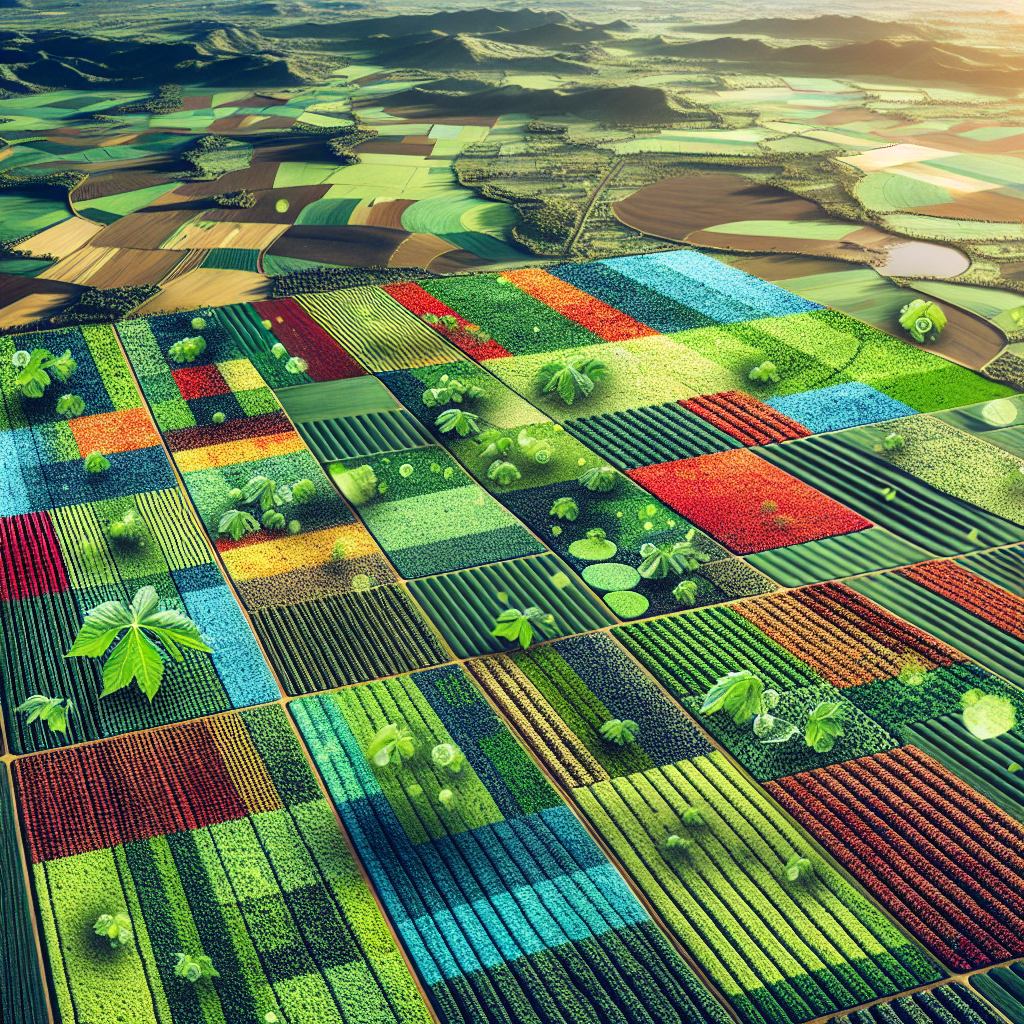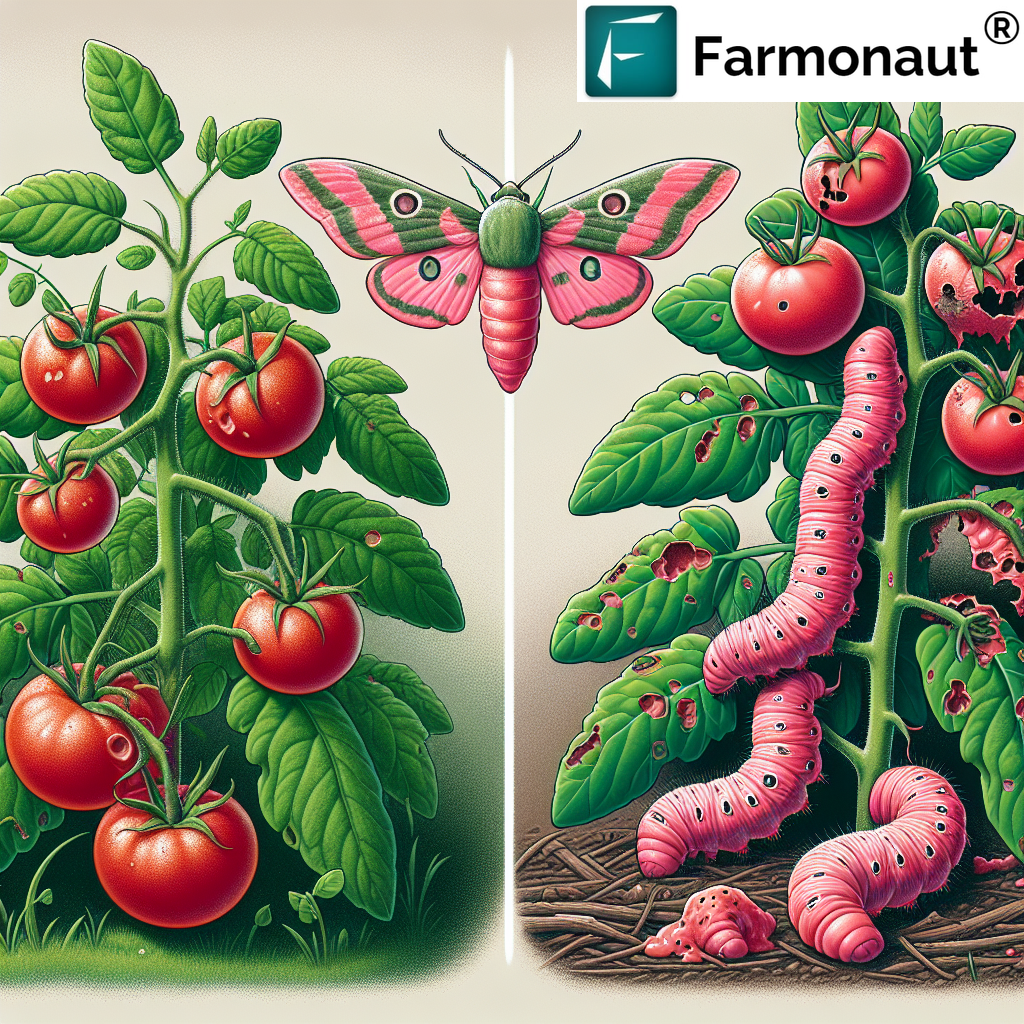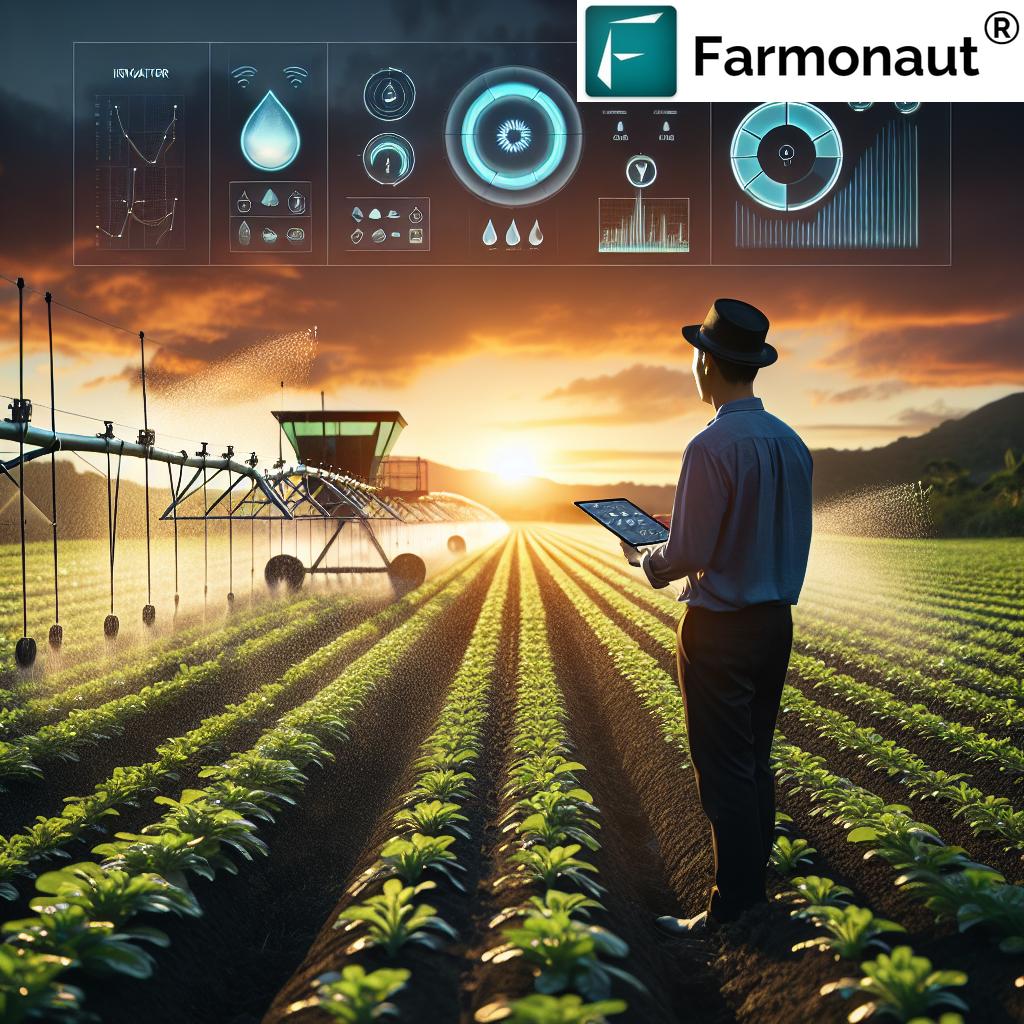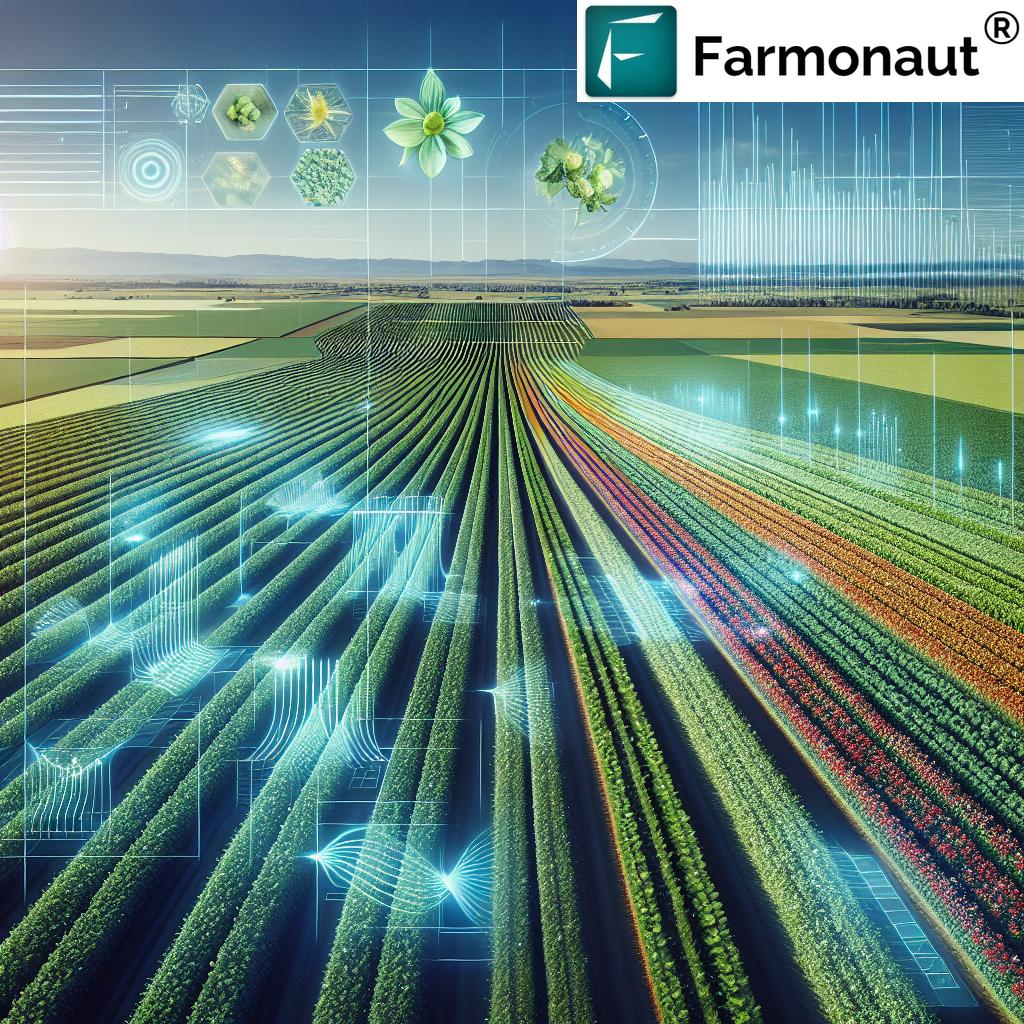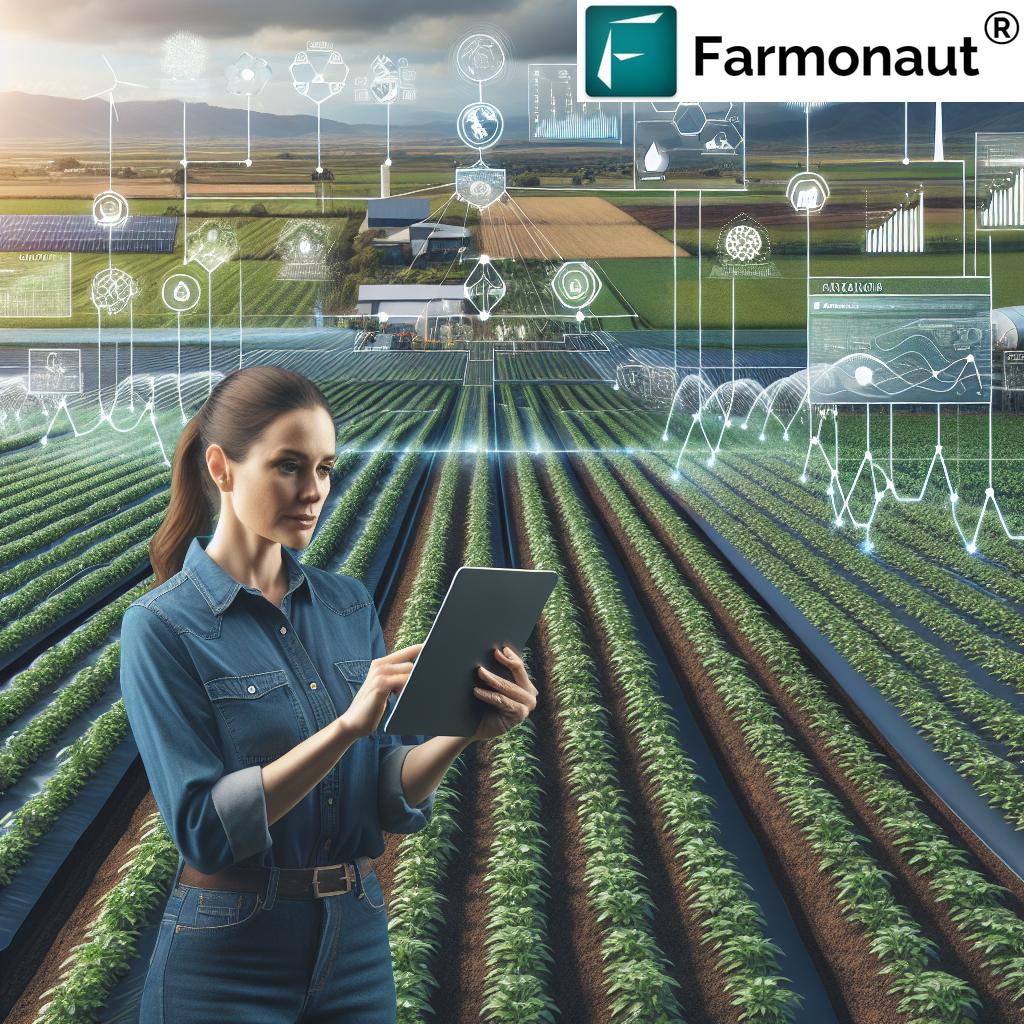Agriculture Machine Learning: 7 Shocking Yield Secrets
- Introduction: The Dawn of Agriculture Machine Learning
- Why Machine Learning in Agriculture Matters
- 7 Shocking Yield Secrets of Agriculture Machine Learning
- Farmonaut: Pioneering Advanced Precision Farming Technology
- Comparison Table: Machine Learning Applications vs Yield Impact
- Machine Learning in Agriculture: Key Challenges
- Future Prospects of ML-Driven Agriculture and Forestry
- Frequently Asked Questions (FAQ)
- How to Get Started: Farmonaut Application & Subscription Links
“Machine learning can improve crop yield prediction accuracy by up to 30% compared to traditional methods.”
Introduction: The Dawn of Agriculture Machine Learning
In recent years, machine learning in agriculture has ushered in a technological revolution across fields, farms, and forests worldwide. By leveraging AI algorithms, data analysis, and satellite imagery, this movement empowers us to harness previously unimaginable insights—fueling both productivity and sustainability.
At the heart of this transformation are yield prediction, precision farming technology, and soil health monitoring, each driven by the intelligent application of machine learning (ML) models. As global populations surge and environmental concerns intensify, our adoption of ML-based practices is no longer an option—it’s imperative.
In this in-depth post, we’ll unveil seven truly shocking secrets about how agriculture machine learning is supercharging yields, optimizing resources, and reshaping the future of farming and forestry. Along the way, we’ll explain the groundbreaking solutions Farmonaut provides, helping agricultural stakeholders everywhere thrive in a data-driven era.
Why Machine Learning in Agriculture Matters
Why is machine learning so critical for our future in agriculture and forestry? Simply put, the traditional approaches we once relied upon—intuitive judgment, manual observation, trial-and-error—can no longer keep pace with our rapidly evolving challenges. Changing weather patterns, frequent pest and disease outbreaks, soil degradation, resource scarcity, and an ever-growing need for accountability demand something better.
This is where ML, AI, and big data analytics enter the scene. By enabling us to analyze massive datasets, identify hidden patterns, and make data-driven decisions in real time, these technologies make it possible to maximize yields, minimize waste, and secure long-term sustainability.
7 Shocking Yield Secrets of Agriculture Machine Learning
Our journey into the heart of machine learning in agriculture uncovers seven surprising innovations that are revolutionizing how we grow, monitor, and protect crops, livestock, soil, and forests. Each secret offers unique benefits—together, they elevate agricultural data analysis, maximize yield prediction, and champion sustainability.
- Yield Prediction with Advanced ML Models
- Disease Detection in Crops with AI & Imagery
- Weed Detection and Targeted Control
- Automatic Crop Quality Assessment
- Precise Soil and Water Management
- Livestock Health & Behavioral Monitoring
- Forestry Conservation Technology: Deforestation & Species Detection
1. Yield Prediction with Advanced ML Models
The first, and perhaps the most transformative, secret is the use of machine learning models for crop yield prediction. By analyzing historical weather data, soil conditions, satellite imagery, and on-ground sensor readings, ML allows us to build prediction models that are leaps and bounds ahead of traditional statistical methods.
How it works: ML algorithms analyze trends, identify correlations, and uncover non-obvious patterns hidden in years of agricultural datasets. These models then provide accurate forecasts on expected yields, helping us with planning, resource allocation, and timely interventions.
For instance, by evaluating soil moisture, nutrient levels, and real-time weather forecasts, ML can advise us on the likely outcome of the current growing season, allowing adjustments in irrigation, fertilization, and harvest plans.
Farmonaut’s platform leverages multispectral satellite imagery to monitor crop growth and assess health, providing real-time yield predictions accessible directly via our Android, iOS, and Web Apps.
2. Disease Detection in Crops with AI & Imagery
Early detection of plant diseases is pivotal for reducing losses and boosting overall productivity. ML-powered image processing (often using images from drones, mobile apps, or satellites) enables rapid disease detection in crops—even before symptoms are visible to the naked eye.
How it works: Computer vision ML models are trained on thousands of images representing healthy and diseased plants. These models analyze incoming imagery, detect early signs of infection, and identify the specific disease type, enabling targeted interventions.
This approach replaces guesswork with data. We can now invoke timely interventions, reduce the spread of diseases, and significantly lower the volume of pesticides used.
With Farmonaut’s Jeevn AI Advisory System, farmers benefit from real-time disease alerts and actionable crop management strategies, all powered by ML and remote sensing. Explore how Jeevn AI works in the Farmonaut App.
3. Weed Detection and Targeted Control
Weeds are a major threat to crop productivity and soil health. Traditional blanket approaches to weed control often lead to unnecessary herbicide use. ML revolutionizes weed management by distinguishing between crops and weeds with exceptional accuracy.
How it works: ML systems process high-resolution images (from drone imagery for crop monitoring or field robots) and learn to recognize the unique visual patterns of crops versus different weed species. Once weeds are identified, targeted control measures can be deployed—such as spot-spraying—significantly minimizing herbicide application.
Not only does this save money, but it also promotes sustainable farming practices and preserves valuable soil micro-organisms.
Did you know? Precision farming using AI reduces fertilizer use by 20%, optimizing soil health and boosting sustainability.
“Precision farming using AI reduces fertilizer use by 20%, optimizing soil health and boosting sustainability.”
4. Automatic Crop Quality Assessment
Ensuring that harvested produce meets market standards has always been a challenge. ML techniques now assess crop quality using visual and sensory data, providing objective, instant feedback.
How it works: Cameras and sensors collect visual and sensory data on each unit of produce (size, color, shape, firmness). ML models are trained to assess quality, rank produce, and flag any substandard output. This reduces post-harvest losses, helps maintain brand reputation, and ensures better returns for farmers.
This technology is increasingly available via mobile devices, making it accessible for small and large farms alike.
5. Precise Soil and Water Management
Healthy, productive fields start with good soil and water management. ML-driven solutions support farmers in making optimal, site-specific decisions about fertilizer, irrigation, and soil amendment.
Soil Analysis & Fertilizer Application:
ML models predict soil properties—moisture content, nutrient levels, pH—by analyzing sensor data, remote sensing images, and weather-driven changes. These insights guide fertilizer application and help restore depleted soils.
Irrigation Optimization with AI:
Access to real-time weather forecasts, soil moisture sensors, and satellite data enables ML algorithms to schedule irrigation precisely when and where it’s needed most, conserving water and improving crop growth.
Farmonaut’s satellite system delivers actionable insights on soil moisture and crop stress, while their subscription packages include blockchain-based traceability and carbon footprinting, promoting both efficiency and environmental protection.
6. Livestock Health & Behavioral Monitoring
ML isn’t just for crops—livestock management has been revolutionized by wearable sensors and AI-powered analysis.
Health Monitoring: Sensor-equipped wearables track vital statistics (temperature, heart rate, movement). ML-based systems analyze these data patterns to detect anomalies, flagging early signs of disease or stress, and triggering prompt veterinary care.
Behavioral Analysis: By studying movement patterns, feeding behaviors, and social interactions, ML models optimize animal welfare—including adjusting nutrition or housing, and identifying changes in herd dynamics.
This results in improved productivity, reduced mortality, and more efficient usage of feed and medication. Learn more about livestock health monitoring in our Farmonaut App.
7. Forestry Conservation Technology: Deforestation & Species Detection
Machine learning is equally transformative in forestry conservation technology. By processing satellite and drone imagery, ML models quickly detect signs of deforestation, illegal logging, and habitat disturbance.
AI-driven platforms also enable species identification—such as detecting rare or protected species and tracking biodiversity—supporting effective conservation efforts.
Poaching patterns are now easier to spot, allowing for targeted deployment of anti-poaching teams in critical wildlife zones. Learn how Farmonaut’s advisory tools support forestry and plantation management.
- Blockchain Traceability: Enhance trust and transparency in supply chains by allowing consumers and corporates to trace farming produce from farm to table, preventing fraud and promoting sustainable agricultural practices.
- Satellite-based Crop Loan & Insurance: Streamline and secure crop loan processes by providing banks and insurance firms with objective satellite data for verification, reducing fraud and enhancing financing access for farmers.
- Fleet & Resource Management: Reduce operational costs and improve agricultural machinery oversight using real-time location and performance data—ideal for large agribusinesses and government agencies.
- Large-scale Farm Management Solutions: Manage plantations, cooperatives, or state-level agricultural assets more effectively using Farmonaut’s scalable monitoring dashboard and resource optimization tools.
Integrate Machine Learning and Satellite Insights into Your Platform
For agri-tech developers and research organizations, Farmonaut offers API access to real-time satellite and weather data. This allows seamless integration with your existing systems.
Access Farmonaut’s Satellite & Weather API
Read the API Developer Docs →
Comparison Table: Machine Learning Applications and Their Yield Impact
| Machine Learning Application | Use Case | Estimated Yield Increase (%) | Key Technology Used | Example Crop/Region |
|---|---|---|---|---|
| Yield Prediction | Crop Yield Prediction | 15–30% | AI Algorithms, Satellite Imagery | Wheat in North India |
| Disease Detection | Early Disease Identification | 10–25% | ML Image Processing | Tomatoes in Spain |
| Weed Detection | Targeted Weed Control | 10–20% | Computer Vision, Drone Imagery | Soybeans in USA |
| Crop Quality Assessment | Market-Ready Produce | 5–15% | Sensor Tech, ML Classification | Apples in Himachal Pradesh |
| Soil & Water Management | Irrigation Optimization | 10–30% | IoT Sensors, AI Recommendations | Rice in Vietnam |
| Livestock Health Monitoring | Animal Welfare & Productivity | 5–12% | Wearables, ML Pattern Analysis | Dairy Cattle in Denmark |
| Forestry Conservation Technology | Deforestation Prevention | 10–22% | Remote Sensing, ML Detection | Amazon Rainforest |
Farmonaut: Pioneering Advanced Precision Farming Technology
As innovators in the agritech world, we are acutely aware that access to real-time insights is a game changer for farmers of all sizes. Farmonaut stands at the forefront by offering a comprehensive suite of satellite-based precision agriculture solutions accessible via Android, iOS, and Desktop/Web Apps—no expensive in-field hardware required.
Our platform includes:
- Automatic Crop & Soil Health Monitoring: Receive real-time updates on crop health, stress zones, and soil moisture content via satellite imagery.
- AI-based Jeevn Advisory: Personalized recommendations for crop care, disease detection in crops, fertilizer/water management, and yield planning—instantly delivered using ML algorithms.
- Blockchain-based Traceability: Ensure every product can be traced from field to consumer, improving market trust for agribusinesses, retailers, and large-scale buyers.
- Resource & Fleet Management: Optimize machinery use, logistics, and carbon footprint to maximize profitability and minimize waste—ideal for cooperatives and agribusinesses.
- Seamless Integration (API): Developers and researchers can integrate Farmonaut data directly into their systems via robust API access.
Farmonaut’s mission aligns with our vision for affordable, scalable, and sustainable agriculture.
Flexible Farmonaut Subscription Options
Choose from packages designed for individual farmers, cooperatives, large-scale agribusinesses, and even government or NGO projects. Pricing is based on land area monitored and data update frequency—offering unmatched flexibility.
Machine Learning in Agriculture: Key Challenges
While the potential of machine learning in agriculture is undeniable, certain challenges must be addressed for mass adoption and maximum benefit:
- Data Quality & Availability: ML models deliver the best results with large, high-quality, and consistently tagged datasets. Many agricultural regions lack sufficient digital infrastructure and data depth.
- Adoption Barriers for Smallholders: High upfront technology costs, limited internet access, and lack of technical knowledge hinder adoption among small-scale farmers. Farmonaut overcomes these barriers by providing low-cost, easy-to-use remote solutions via web and mobile apps.
- Ethical Considerations: Questions about data privacy, labor displacement, equity of access, and algorithmic transparency remain central concerns as ML spreads across agriculture and forestry.
- Integration with Legacy Systems: Not all farms or agribusinesses are digitized; ensuring smooth integration of new ML tools with existing workflows is crucial.
Overcoming these issues requires a collaborative approach—uniting technologists, policymakers, and the farming community to develop accessible, ethical, and inclusive solutions.
Farmonaut’s platform is purpose-built to address these gaps. Its satellite-driven insights work on any smartphone or computer, democratizing access to world-class precision agriculture.
Future Prospects of ML-Driven Agriculture and Forestry
Looking ahead, the fusion of machine learning, big data analytics, satellite/IoT sensing, and blockchain holds exciting prospects for agriculture and forestry worldwide. Key trends we anticipate include:
- Hyper-local Farm Advisory: AI advisors (like Farmonaut’s Jeevn AI) will deliver crop-specific, field-level guidance in real time.
- End-to-End Traceability: Blockchain and IoT ensure every product in the food and fiber supply chain is traceable, authentic, and sustainable—reducing fraud and empowering consumers as conscious buyers.
- Autonomous Decision Making: Farms will be able to operate more autonomously, using real-time data and AI to make decisions on irrigation, nutrient delivery, pest management, and scheduling without manual intervention.
- Integrated Actions Against Environmental Threats: ML-driven platforms will detect drought, pest outbreaks, or illegal logging as soon as they occur—allowing for rapid, coordinated responses across regions.
- Expanding Access & Affordability: As technology costs fall and ML platforms become available via mobile/web apps (like Farmonaut), even smallholder farmers will reap the benefits of advanced insights and higher productivity.
The ultimate vision: A resilient, transparent, and environmentally friendly agricultural future—powered by data and AI-driven practices.
How to Get Started: Farmonaut Application & API Access
Ready to unlock higher yield, efficiency, and sustainability using agriculture machine learning? Getting started is simple:
- Use the Farmonaut Application (Android, iOS, Web): Access crop health, soil moisture, yield prediction, advisory, and more from any device—no special hardware required.
- Request API Access: Use Farmonaut APIs to integrate satellite & weather insights into your own apps or government/regional dashboards.
- Consult Pricing & Subscriptions: Choose a subscription based on your farm size or organization and get instant access to precision agriculture tools.
Frequently Asked Questions (FAQ)
Q1. What is machine learning in agriculture?
Machine learning in agriculture involves using AI-powered algorithms to analyze large agricultural datasets for pattern detection, prediction, and optimization of farming processes—such as crop yield prediction, soil analysis, disease detection, and resource allocation.
Q2. How does Farmonaut use machine learning for crop monitoring?
Farmonaut combines satellite imagery with ML models to automatically detect crop health, soil moisture, stress patterns, and forecast yield outcomes. Insights are delivered directly via the Farmonaut Apps for real-time action.
Q3. Is precision farming technology expensive?
Traditionally, yes. However, Farmonaut democratizes access by offering low-cost, subscription-based entry to advanced satellite and ML-based crop monitoring, accessible via widely used devices (smartphones/computers).
Q4. What are the biggest benefits of machine learning in agriculture?
ML enhances decision-making by providing accurate yield predictions, early disease/weed detection, resource optimization, improved crop quality assessment, and transparent traceability—ultimately maximizing productivity while promoting sustainable practices.
Q5. Can Farmonaut be used for livestock monitoring and forestry conservation?
Yes, Farmonaut’s platform supports both livestock health monitoring (via data integration) and forestry/plantation management using advanced satellite and AI analytics.
Conclusion: The Future of Smart Farming is Now
The era of agriculture machine learning has arrived. By embracing AI, satellite insights, and real-time data analysis, we—farmers, agribusinesses, governments, and consumers—stand to gain improved yield, sustainability, transparency, and profitability.
Whether your goal is yield prediction, disease detection, irrigation optimization, or supply chain trust, affordable and reliable tools are now at your fingertips. Farmonaut is here to empower your journey—try it today, and experience the next generation of data-driven farming.





